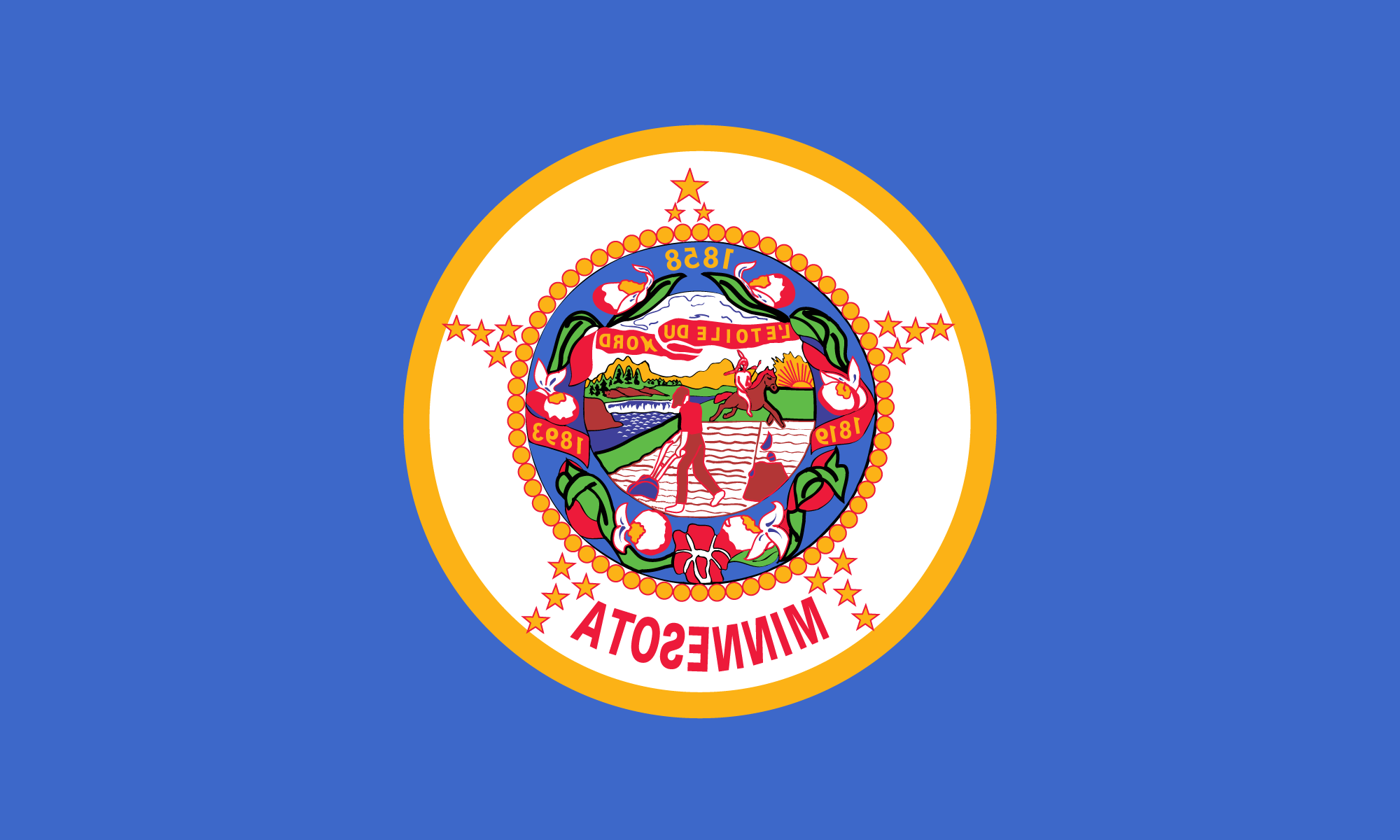
My flag design is rectangular with the same aspect ratio as the current flag. A royal blue triangle bisects the flag running in a diagonal from the upper left hand corner to the lower right. The angling and position are representative of the north shore while the color represents the natural beauty of the rivers and lakes.
A dark green right triangle occupies the lower left side of the flag. On the left edge of the flag it extends from the lower left corner to the midpoint; on the bottom edge of the flag it extends from the lower left corner out 3/4 of the way to the right edge. This represents the rich soil of southern and central minnesota and more generally the importance of agriculture and forestry to our state’s economy.
A thick asymmetric white band, narrower on the lower right edge and broader on the upper left runs between the blue and green segments of the flag. It represents winter and snow. The angling of this stripe is meant to be suggestive of movement and flux in the flag as a whole. After all, the seasons are constantly changing and our population is constantly evolving.
The most striking feature of this design, for which it is named is the 5-point star in the upper right corner. While five point stars are incredibly common on flags (and are included on the current state flag) this star is unusual as it has been split so that the negative space within the star creates a second 5-point star. Together these two stars represent the Minneapolis and St Paul. The points of gold star also represent five major groups of people who are of importance to the state’s heritage: The Native Americans, the French Canadian fur trappers, the Farmers, the Loggers, and the Miners.
This design is simple yet contains meaningful symbolism with only a few basic colors. It is also is quite distinctive. The split-star concept is not used in other flags, and the color pattern and direction of the diagonal are also unique. Whereas vertical or horizontal stripes on rectangular flags are very common, asymmetric color patterns with diagonal stripes are rarely encountered (as on the country flags of Bonaire, (former) Republic of Congo, and Solomon Islands). The asymmetric stripe of white is another unusual feature, which makes this flag design both visually attractive and easily recognizable.
The color symbolism is timeless and acknowledges past flag designs, including the 1893-1957 state flag, the 1957-1983 state flag, the flag of the Minnesota 1st volunteer infantry regiment, and the previously proposed North Star design.
This flag design is timeless. Unlike nordic cross style flags, it does not pay tribute to any specific group of our population while ignoring more recent/minority populations. Instead it celebrates the natural beauty of our state, or resources, and our history.

